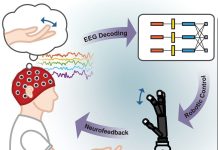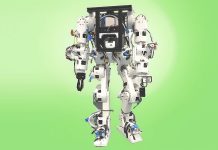
Researchers at Carnegie Mellon University have come up with some exciting ideas for how robots can help make sidewalks safer and more accessible for everyone, especially people with disabilities.
Their study highlights the benefits of collaboration between roboticists and people with disabilities to create better robot designs.
During the pandemic, sidewalk delivery robots became very popular. But these robots often share the same space as pedestrians, leading to conflicts, especially for those with mobility issues.
A robot blocking the sidewalk can make it difficult for someone in a wheelchair to pass.
Sarah Fox and Nikolas Martelaro, assistant professors in Carnegie Mellon’s Human-Computer Interaction Institute, worked with people with mobility disabilities to identify the biggest problems and brainstorm solutions.
They found that many startups making these robots move fast and don’t always consider accessibility from the start.
Roboticists in the study agreed that accessibility needs more attention. They also suggested the industry should have better standards and regulations, similar to the Web Content Accessibility Guidelines, to ensure robots meet everyone’s needs.
Through their discussions, Fox and Martelaro discovered many new ideas for how robots could help on sidewalks.
Instead of just delivering food, robots could clear snow, provide directions, act as crossing guards, carry items, or help people shop.
They could also monitor sidewalks for traffic or obstacles and alert users through a mobile app, similar to how Waze or Google Maps works for drivers.
This study builds on previous research by Fox and Martelaro, including a 2021 study on how sidewalk robots affect public access and a 2023 study on a delivery robot pilot in Pittsburgh.
They found that robots work well in controlled environments like college campuses but struggle in busy neighborhoods with broken sidewalks and other obstacles.
Robots also have limitations when serving customers with disabilities. For example, they can deliver food but can’t bring it to someone’s door or inside their home if they can’t climb stairs or take an elevator.
The study found that addressing accessibility often comes too late in the design process. Sometimes, making robots more accessible requires major changes or new features.
For instance, a robot with an arm could help people reach high shelves, but it also needs to be designed in a way that doesn’t scare people.
Fox and Martelaro’s future research will focus on involving more stakeholders in the design process and testing these new ideas effectively. They believe deeper engagement with people will lead to better, more inclusive robot designs.
The researchers presented their study, led by PhD student Howard Han, at the ACM Conference on Human Factors in Computing Systems (CHI 2024).
Source: Carnegie Mellon University.



